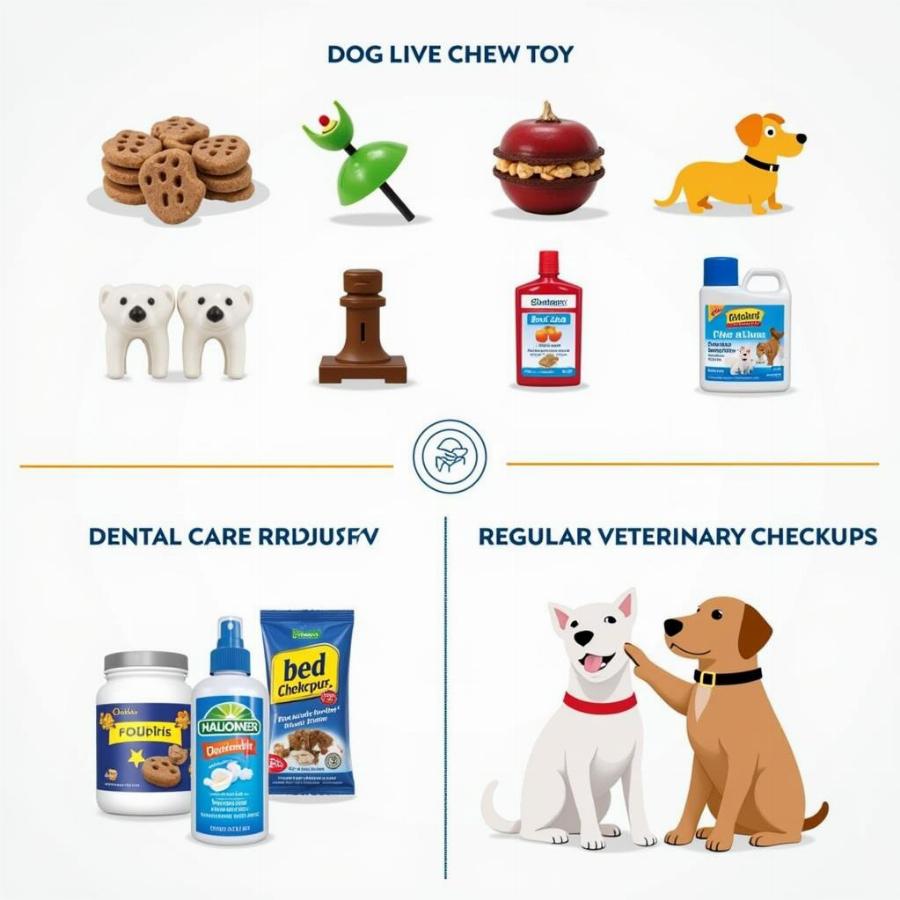A chipped molar in your canine companion can be a cause for concern. Whether it’s a small chip or a larger fracture, understanding the causes, symptoms, and treatment options for a dog chipped molar is essential for ensuring your furry friend’s oral health and overall well-being. This article will delve into everything you need to know about dog chipped molars, empowering you to take the best possible care of your beloved pet.
Understanding Chipped Molars in Dogs
Chipped molars, also known as fractured teeth, are a common dental issue in dogs. They occur when a piece of the tooth breaks off, often due to chewing on hard objects, trauma, or underlying dental disease. While some chips may be minor and cause little discomfort, others can be quite painful and lead to serious complications if left untreated. Recognizing the signs of a chipped molar is crucial for prompt intervention.
Causes of Chipped Molars in Dogs
Several factors can contribute to a chipped molar in dogs. Chewing on hard objects like bones, rocks, or ice is a leading cause. Trauma to the mouth, such as being hit by a car or falling from a height, can also result in fractured teeth. Underlying dental diseases, like periodontal disease, can weaken the teeth, making them more susceptible to chipping.
Symptoms of a Chipped Molar in Your Dog
Identifying a chipped molar in your dog may not always be easy, as they can’t tell you what’s wrong. However, several signs can indicate a dental problem, including:
- Pawing at the mouth: Your dog may frequently paw at their mouth or rub their face against objects if they are experiencing pain from a chipped molar.
- Changes in eating habits: Difficulty chewing, dropping food, or reluctance to eat hard food can be indicators of a dental issue.
- Excessive drooling: Increased drooling can be a sign of pain or discomfort in the mouth.
- Whining or whimpering: Vocalizations, particularly when eating or touching the mouth area, may suggest pain.
- Bleeding from the mouth: While not always present, blood in the saliva can be a sign of a chipped molar or other oral injury.
- Swelling or redness around the mouth: Inflammation around the mouth may indicate infection or injury.
Treatment Options for a Dog Chipped Molar
The treatment for a chipped molar depends on the severity of the fracture and the overall health of your dog. Your veterinarian will evaluate the extent of the damage and recommend the appropriate course of action. Treatment options may include:
- Dental filling: For minor chips, a dental filling can restore the tooth’s structure and function.
- Root canal: If the fracture extends into the pulp of the tooth, a root canal may be necessary to remove the infected tissue and save the tooth.
- Tooth extraction: In severe cases where the tooth is significantly damaged or infected, extraction may be the best option.
- Pain management: Pain medication may be prescribed to manage discomfort during and after treatment.
Preventing Chipped Molars in Dogs
While not all chipped molars are preventable, certain measures can help reduce the risk:
- Avoid giving your dog hard objects to chew on: Opt for chew toys specifically designed for dogs that are made of durable but safe materials.
- Regular dental checkups: Schedule routine dental cleanings and examinations with your veterinarian to detect and address dental problems early on.
- Provide a balanced diet: A healthy diet contributes to overall oral health.
 Phòng ngừa gãy răng chó
Phòng ngừa gãy răng chó
Conclusion
A chipped molar in your dog requires prompt attention to prevent further complications. By understanding the causes, symptoms, and treatment options, you can help ensure your furry friend’s dental health and overall well-being. Regular veterinary checkups and preventive measures are key to maintaining a healthy smile for your canine companion. Don’t hesitate to contact your veterinarian if you suspect your dog has a chipped molar.
FAQs
- Can a chipped molar heal on its own? No, chipped molars do not heal on their own and require veterinary intervention.
- Is a chipped molar painful for a dog? It can be, especially if the fracture is deep and exposes the sensitive inner layers of the tooth.
- How much does it cost to treat a chipped molar in a dog? The cost varies depending on the treatment required and your veterinarian’s fees.
- Can I prevent my dog from chipping their molars? While not entirely preventable, avoiding hard chew objects and maintaining good oral hygiene can reduce the risk.
- What are the long-term effects of an untreated chipped molar? Untreated chipped molars can lead to infection, pain, and tooth loss.
Related Articles
Beaut Dogs: Your Ultimate Resource for Canine Care
Beaut Dogs is your one-stop destination for all things dog-related. We provide comprehensive and trustworthy information on dog breeds, care, health, and more. When you need expert advice, contact us at [email protected] (Email address) for detailed and accurate answers. We’re here to help you navigate the wonderful world of dog ownership!